The (new) end of the trail
May 30, 2014
For years, hikers have been banned from Malibu’s Puerco Canyon Trail and the rest of a stunningly scenic 703-acre property in the Santa Monica Mountains, mostly owned by film director James Cameron.
According to Paul Edelman, chief of natural resources and planning for the Santa Monica Mountains Conservancy, visitors were met with barbed wire and security teams until a few years ago, when they were finally allowed to walk through the oak-studded property, home to a variety of wildlife.
Still, access has stopped short of the end of the trail. At one point along the way, hikers are met with a chain link fence that keeps them from connecting to the adjacent Corral Canyon Trail. And hikers on that popular 2.5-mile loop have been stymied by that same fence, which prevents them from heading into Puerco Canyon.
But that final barrier is about to fall: On Tuesday, the Los Angeles County Board of Supervisors approved a $6 million allocation to help purchase Cameron’s acreage. Also contributing to the purchase: $4.5 million from the Wildlife Conservation Board and $1.5 million from the California State Coastal Conservancy.
The new owner, the Mountains Recreation and Conservation Authority, will oversee the property with the goal of preserving open space, habitat and resources. Once escrow closes, a date for public access will be set.
The collective 24 parcels of land known as the Puerco Canyon Properties, formerly slated for housing development, represents a major piece of the geographic puzzle in Supervisor Zev Yaroslavsky’s longstanding effort to foster preservation and public access in the Santa Monica Mountains.
The property will dramatically increase access between 1000-acre Corral Canyon Park and the 7,000-plus-acre Malibu Creek State Park, Edelman said.
“It’s the last big piece in the Malibu State Park core habitat areas,” Edelman continued. “There aren’t too many big ownerships left in the Santa Monica Mountains. This is the last big sucker in L.A. County.” (The remaining large private properties in Ventura County are the 1000-acre Deer Creek Canyon property owned by the Mansdorf Family Trust and the even larger Broome Ranch).
The “last big sucker” is significant for more than its size. Contained within its borders are major sections of the new Coastal Slope Trail. This project-in-development includes a small portion of the existing Puerco Canyon Trail and will eventually run about 65 miles from Point Mugu State Park on the coast to Topanga State Park in Topanga Canyon.
Not only does the parcel facilitate new trails—its acquisition serves to preserve a delicate ecosystem. According to the coastal conservancy’s project summary for the purchase, the Santa Monica Mountains “encompass a rare biome that can be found in only four other locations on the planet.”
Vegetation and wildlife include native grassland, chaparral, coastal sage scrub, sycamore-willow woodland, oak trees and a wealth of animals, including mountain lions, bobcats, and gray foxes.
Said Edelman: “You could say that it probably has one of everything, animal-wise, with the exception of maybe salamanders. My guess would be 15 of the 19 snakes in the Santa Monica Mountains are down there, just because it’s so big.” The acquisition will also protect drainage areas that play an important role in the movement of wildlife in the area.
Not bad for a former pig farm. Along with its small enclave of luxury houses, Puerco Canyon was once home to a sprawling pig farm that existed into the 1980s.
That’s good for hikers too, Edelman said. “There’s a portion that has not been accessible to the public that has a whole system of neat little trails that were carved for the pig farm,” he said. While the trails were created for farm vehicles, they’re trail-ready for hikers and their dogs — or any pet pig that might choose to tag along.
Posted 5/30/14
L.A.’s cool summer hotspot
May 30, 2014
A crowd of 4,000 showed up to Grand Park for a salsa festival on Memorial Day, the unofficial start of summer. The dancers were sizzling, but the park is just getting warmed up— in the coming months, many more fun times are planned for downtown L.A.’s newest public space.
Park programming director Julia Diamond said she tries to cast a wide net when planning events.
“We go for a broad spectrum so that we can cater to a lot of different interests,” Diamond said. “We want people to have varied reasons to come into the park.”
The summer schedule includes three large events with smaller happenings that will take place on a regular basis. The first biggie is the 4th of July Block Party. After attracting 10,000 last year, Diamond is expecting closer to 25,000 in 2014. The event’s footprint will grow to match her expectation; several adjacent streets will be closed to accommodate the throngs. There will be DJs, live music, food and, of course, fireworks—but this year they’ll be shot from the roof of the Dorothy Chandler Pavilion so all of downtown can see the show.
After that, the next big date is July 26, when the park will celebrate National Dance Day with top performers in a variety of styles, plus a wet dance party in the park’s ever-popular splash fountain. Then, the final summer offering comes on September 28 when the Music Center presents “Universe of Sound: The Planets.” A huge tent with planetarium-style visual displays will be the setting for an interactive musical experience in which attendees will be able to conduct and play their own music as 132 live musicians perform Gustav Holst’s The Planets.
If you can’t wait until July, other fun is just around the corner—the first of four Sunday Sessions will take place this weekend, on June 1. The event will bring some of the top electronic dance music artists in SoCal to perform in a family-friendly environment so party people of all ages can get their groove on. And for those who want to create the beat themselves, “Drum Downtown” events offer percussionists of all skill levels a chance to beat the skins with guidance from pros. Equipment will be provided.
For the daytime crowd, “Lunch a la Park” brings a rotating cast of L.A.’s best gourmet food trucks on Wednesdays and Thursdays. After the workday, Grand Park’s Bootcamp can help work off any double bacon kobe sliders in which you may have indulged.
But sometimes families may just want to chillax at the end of a long summer day. The “Movies in the Dark” series hearkens back to the days of the double feature and adds games, contests and trivia competitions with prizes to the experience.
Not all events have been posted on the park’s website yet, so the best bet for those who want to attend is to keep tabs on the calendar or follow the park’s Facebook page.
It may sound like a lot of stuff will be going on, but Diamond says that the park has actually scaled back the number of events.
“We’re trying to get out of people’s way a little bit,” Diamond said. “We want people to use Grand Park just as a park.”
Diamond said the young park is starting to build solid regular attendance. The hot months of the summer are among the busiest, with the splash fountain offering a sweet way to beat the heat—and a safe place for kids to cavort while their parents kick back and sip iced lattes under palm trees atop the hot pink furniture.
Another major attraction is how photogenic the park can be. Between the Arthur J. Will Memorial Fountain, city hall and the gardens of blossoming flora from around the world, Grand Park has generated plenty of shutterbug enthusiasm, as can be seen on sites like Instagram, where its official account has more than 6,200 followers.
But Diamond hopes that when people leave they take more than snazzy snapshots with them. She wants Grand Park to become a place of nostalgia for Angelenos, a place they will remember years from now.
“I want to be in people’s memories at the end of the summer when they put that sweater on for the first time,” Diamond said. “I want them to remember that a high moment came at Grand Park.”
Posted 5/30/14
Searching a web of clues
May 30, 2014

Scouring social media sites, sheriff's researchers have put a serious crimp in hundreds of teen parties.
There are no bigger party poopers in town than a tiny team of web savvy sleuths in the Sheriff’s Department, who patrol social media looking for potential trouble, including jammed-to-the-rafters raves that promise alcohol and drugs to underage partyers, particularly teenage girls.
During the past few years, the little-known unit has “intercepted” and helped block 1,000 parties before they even got started, according Cmdr. Mike Parker, the department’s leading authority on social media and online communications.
Sometimes, Parker said, deputies are dispatched directly to doorsteps, where they warn adults that they’ll be arrested for contributing to the delinquency of a minor should the party go off as advertised on Facebook, Twitter or other social media sites. Other times, the deputies will join an online conversation among would-be celebrants with this buzz-killing greeting: “Thanks for the invite. See you there!”
As a result, the department’s proactive Internet strategy has short-circuited the assaults and neighborhood disruptions that often accompany raves—and saved public dollars that otherwise would be spent on patrols and prosecutors.
“If it’s being shared for all the world to see,” Parker said of the party promotions and other postings that raise red flags about public safety, “then it’s the social equivalent of standing outside of school with a bullhorn. There’s no expectation of privacy. But if, as a law enforcement officer, you’re pretending to be someone else, that’s where you get into that danger zone of Big Brother accusations.”
The notion of proactively scouring the web for possible crime clues has emerged on the public radar in a very different context in recent days. In the aftermath of last Friday night’s Isla Vista murders, sheriff’s officials in Santa Barbara have been questioned about whether they should have known more about the killer with whom they’d had earlier contact and who had posted provocative videos and rants. Authorities there have acknowledged that, while they were aware of Elliot Rodgers’ videos, they did not view them.
In reality, most local police agencies have yet to explore the potential of the Internet as a preemptive crime-fighting tool, one that requires training and staffing, just like any other specialized law enforcement job, says Parker, who emphasizes that he is not second-guessing Santa Barbara police.
“It’s not like a 911 call that you’re obligated to respond to,” Parker said the other day, as he prepared to deliver a social media presentation at the county’s annual leadership conference. “It’s a very different challenge. You have to go out and hunt, and you have to want to do it. You have to pride yourself on finding things.”
Parker, a 29-year-veteran of the department, is a nationally-recognized leader of that effort. Until his recent promotion as commander of the north county patrol division, he headed the Sheriff’s Headquarters Bureau, which included the new Electronic Communications Triage Unit. Today, he’s its consultant and evangelist.
The unit has two full-time members and some part-timers whose web work extends far beyond raves. Using “keyword” and “geo-tag” searches, they target issues that could touch a broad swath of society or a single family—from preparing for a flash mob that’s been promoted online to trying to rescue a suicidal teenager. Parker shared this story:
After an assault with a deadly weapon occurred in a particular neighborhood, one of the unit’s members began searching the web for postings by witnesses that deputies could interview. In the process, she discovered a posting by a neighborhood girl who was threatening to take her own life. She’d posted pictures on Instagram and revealed she’d been cutting herself.
A street sign in the background of one of the photos allowed deputies to zero in a possible home. On the first visit, no one answered. The second time, mother and daughter were both there, Parker said.
“That’s when the mom found out that her girl was cutting herself and wanted to kill herself,” he said, adding that the mother knew her teen was depressed but did not understand the depth of her despair. The girl was voluntarily admitted for mental health care.
Asked whether the deputies’ intrusion into the girl’s life could be seen as a breach of her privacy rights, Parker responded:
“A key element is that she is sharing what she is doing for the entire world to see, including a potential predator, who would see her vulnerability as something to exploit. Psychologists would call her actions an open cry for help. We heard her cries and came to help. Too often, people are afraid to get involved…and sadness and regret often follow.”
“We could probably keep someone busy fulltime just working on people who want to hurt themselves,” Parker said.
Looking to an increasingly digital future, Parker said he believes that a robustly staffed regional center should be created to help law enforcement officers scour the web for open source material that could produce investigative leads at any time of day, just like other kinds of multijurisdictional task forces.
“As I say that, I know civil libertarians get concerned,” he admitted. But he argued that people put information into the public domain for the world to see—“and I’m a member of the world.”
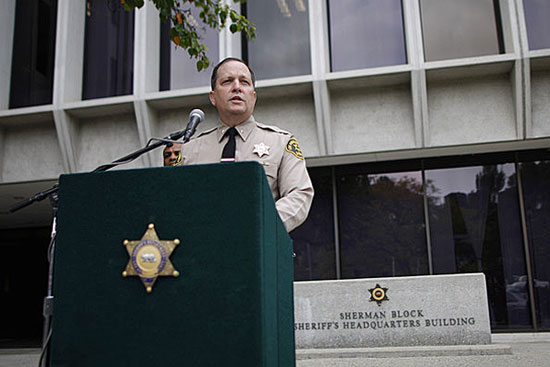
Cmdr. Mike Parker has been leading the way in using the Internet to proactively identfy potential trouble.
Posted 5/30/14
It’s not over yet
May 29, 2014
The big milestones are now in the rearview mirror. A much-anticipated carpool lane through the Sepulveda Pass is up and running, massive bridges have been reconstructed from the ground up and soaring new flyover ramps are open for business.
But make no mistake: after nearly five years of construction, the 405 Project is still a work in progress.
A glance at the project’s Twitter feed makes it clear that ramp closures and lane shutdowns are still a daily fact of life in the construction zone. Starting tonight, for the second time this week, the entire southbound freeway will be closed from Getty Center Drive to Wilshire Boulevard so workers can pave and stripe lanes on the roadway’s surface. (Nighttime closures are in effect in that stretch through Monday morning; details are here.)
The ongoing work is needed to accomplish a series of smaller but nevertheless important jobs that remain on the 405 “punch list,” even after last week’s grand opening of the 10-mile northbound carpool lane that’s at the heart of the project.
These tasks include landscaping, drainage and electrical work, completing a wall north of Getty Center Drive, putting up signs, painting lane markings, removing the temporary barriers known as k-rail, and paving sections of the freeway and affected surface streets—particularly a portion of Sepulveda Boulevard, which has had to be literally relocated eastward to accommodate the wider freeway.
“The contractor will be working out there for the remainder of the year,” said Metro spokesman Dave Sotero. “There will be lane and freeway closures intermittently.”
Still, he promises: “No more Jamzillas, Carmageddons, or anything like that. Most of the major work, if not all of the major work, is now open to the public.”
Meanwhile, data are not yet available on travel times and vehicle usage through the Sepulveda Pass since the carpool lane’s opening. Traffic sensors in the pavement won’t be working until electrical work is completed—and that’s another item on the project to-do list.
Posted 5/29/14
The creature from Topanga Creek
May 28, 2014
Louisiana red swamp crayfish may be a delicacy in the gumbo pot, but these voracious Cajun imports are an unwelcome ingredient in Topanga Creek, where they cloud the water and chow down on native fish, bugs and amphibians.
They’ve been in residence since 2001, when a local resident is said to have dumped a batch of live crayfish into the creek in hopes of cultivating a perennial free bait supply. Since then, there have been intermittent community clean-ups, and those efforts—coupled with winter storms that traditionally have washed many of the crustaceans out to sea—were usually enough to keep the population in check. But a lack of significant rainstorms since March 2011 has spawned a crayfish baby boom.
“We’ve had perfect growing conditions for crayfish. The water is slow-moving. It’s warm. And they have gone berserk,” says Rosi Dagit, a senior conservation biologist with the Resource Conservation District of the Santa Monica Mountains. “They’re a very intense predator…It’s kind of gotten out of control.”
That’s bad news for the health of the creek and also for creatures like the California newt, a snack of choice for hungry crayfish.
“One day we literally witnessed a newt in the hands of five crayfish,” says Lizzy Montgomery, 25, a Watershed Stewards Project intern working at the site. Montgomery and her fellow intern, 24-year-old Crystal Garcia, are in the midst of a crayfish research and removal plan now underway at the creek.
They rescued the newt, but the sight of the near-carnage was enough to help Montgomery get over her qualms about dispatching the crayfish with extreme prejudice. (The creek is clean but the crayfish are bottom-feeders and probably not suitable for people to eat, Dagit says. The collected specimens have been frozen and donated to the Nature of Wildworks wildlife center as food for raccoons being rehabilitated there.)
The interns haven’t been working alone. Starting in October, they mobilized a brigade of local schoolchildren from Calvary Christian School in Pacific Palisades and the Topanga Wildlife Youth Project to conduct weekly crayfish removals in a section of the creek. Their haul to date: more than 400 crayfish.
With the end of the school year, the program has gone on hiatus but Montgomery and Garcia say they hope to bring it back. Supervised removals are important because of Topanga Creek’s delicate eco-system; the creek is home to several endangered or threatened species and fishing is prohibited, with special permission required for any crayfish removal, Dagit emphasizes.
Meanwhile, Montgomery and Garcia also are conducting scientific research comparing the cleaned-up area with an adjacent part of the creek where the crayfish continue to run wild. They’ve already created a scientific poster that they’ve presented at two conferences, and hope eventually to have their findings published by the Southern California Academy of Sciences.
Their internships, funded by a grant from the office of Supervisor Zev Yaroslavsky, are set to end in August. After that, it will be time for an all-too-common Southern California pastime—hoping for rain. Even a wet winter probably wouldn’t be enough to completely eliminate the crayfish, which Dagit says are now established in most of the creeks in the Santa Monica Mountains. But it would help keep the invaders in check.
“What we’re hoping is that we’ll get some really good rains and that the population will get severely diminished,” Dagit says. “And at that point we will mobilize people as best we can to do a really concerted removal.”
For a peek at how it’s done, check out the YouTube video below.
Posted 5/28/14
Students fare well on Metro
May 22, 2014
When Metro’s board voted to raise fares today, students got a hall pass.
Metro’s Board of Directors froze student fares at their current rates, while directing staff to explore creating a diversion program to keep fare-evading young people out of the criminal justice system. The action came in response to a motion by Supervisors Mark Ridley-Thomas, Zev Yaroslavsky and Don Knabe, and Mayor Eric Garcetti.
The decision to spare students came after a marathon hearing at which nearly 140 people testified against the fare hikes. Overall, Metro’s base fare will increase by 25 cents to $1.75 this September, while weekly passes will rise from $20 to $25 and monthly passes from $75 to $100. At the same time, the board also voted for the first time to bring free transfers, good for two hours of travel, to the Los Angeles transit system, doing away with the long-running practice of charging $1.50 for each leg of a rider’s journey. The board voted 12-1 to approve the changes, with Supervisor Gloria Molina casting the lone dissenting vote.
The move to focus on students calls attention to one of Metro’s key constituencies.
Metro spends about $10 million a year to subsidize fares for K-12, college and vocational students, agency spokesperson Paul Gonzales said. That translates to big savings for individual riders over time—for example, student monthly passes are just $24 instead of the normal $75. Those discounts are critical for students like Samantha Healy, 15, a sophomore at the Ramon C. Cortines School of Visual and Performing Arts.
“Our families have a lot to pay for already because when you’re a student there’s a lot of stuff you have to do,” Healy said. “It gets expensive.”
Another student interviewed at the Civic Center subway station, India Barrett, said Metro often is the only way she and her friends can get around.
“I think it’s a good idea for fares to stay low because students take the train all the time,” Barrett said. “Parents don’t have the time to take kids everywhere they need to go.”
In April, more than 2 million rides were taken by students during the week, accounting for 10% of Metro’s weekday ridership.
And there’s still room for more to jump aboard. According to a 2009 survey, 51% of L.A. County students aged 5 through 15 usually took private vehicles to school—many doing so even when the trip was a half mile or less. That’s 7% above the national average, said Jessica Meaney, the Southern California policy director for the organization Safe Routes to Schools. Meaney said Thursday’s action represents a step toward getting more families to make use of the transit system.
“Removing barriers for students will increase ridership and help Metro achieve its regional goals,” Meaney said.
For students like 15-year-old Trecey Dory, it all comes down to basic economics.
“Increasing fares? Yeah, that would suck,” Dory said. “It’s hard enough for me to scrape up the $24.”
Tululla Steele, 15, said she hasn’t applied for student fares because she hasn’t gotten an identification card from her school yet. She questioned the logic of raising fares in the first place.
“It is public transportation, after all,” Steele said. “It’s supposed to be affordable.”
Beyond the economic issue, some have complained that citations for fare evasion unnecessarily criminalize young people. The motion approved by Metro’s Board of Directors seeks to change that.
“It pushes to decriminalize a system which gives an adult a ticket and a kid a record,” Mayor Garcetti said.
In approving the motion, the board directed the agency’s staff to report back in September on creating a diversion program, which could include things such as online education and community service in lieu of court appearances and heavy fines. The motion also suggests looking into possible legislative fixes; most adult violations were diverted to Metro’s administrative Transit Court in early 2012, but the L.A. County Superior Court requires juveniles to appear because of state law, said Duane Martin, Metro’s executive officer in charge of transit security.
Out of 110,073 total fare evasion tickets issued in 2013, 10,073 of them went to minors, about half between the hours of 3 p.m. and 6 p.m.
Posted 5/22/14
County fish story no whopper
May 22, 2014

L.A. County crews hauled tons of anchovies and sardines out of the marina, with help from the pelicans.
You could see in the sky that something was fishy.
On Sunday, hundreds of pelicans were dive-bombing the waters of Marina del Rey, while swarms of screaming gulls circled overhead. “It was like a scene out of Hitchcock,” recalled Kenneth Foreman of the Los Angeles County Department of Beaches and Harbors.
But unlike the film version, these frenzied birds (and legions of gluttonous sea lions) were gorging themselves on a spread of anchovies and sardines—a very big, stinky spread. For reasons still unclear, the tiny fish had found their way into a corner of the marina, where they depleted the oxygen and suffocated.
As division chief of the agency’s facilities and property maintenance section, it was Foreman’s job to get rid of the silvery mess that had boaters and residents crying foul.
By late Sunday afternoon, less than a day after the fish surfaced en masse, Foreman’s crews had removed an estimated 6 tons of them. “Our guys did a great job in a short period of time,” said Foreman, a 30-year veteran of the department. For the record, he said, the fish carcasses weren’t placed in a shallow, sandy grave. They were transported by a disposal company to Victorville, where they’ll be converted into compost “so that some beneficial use can come of this.”
The media frenzy that surrounded the weekend die-off and clean-up offered a rare moment in the sun for Foreman’s operation. Away from the glare, his crew tackles everything from cleaning the county’s 51 beach bathrooms to stringing nets on 292 volleyball courts to alerting authorities to the occasional pre-dawn discovery of dead bodies on the sand—some of them apparent suicides.
“I guess the beach was the last thing they wanted to see,” said Foreman, whose 157 employees are also responsible for 1,169 trees, 8.5 miles of sand berms, 4,700 boat slips and 8,161 beach parking stalls.
Every year, between 50 to 60 million visitors flock to the 61 miles of beaches maintained and operated by Los Angeles County. That’s more than all the national parks combined, according to Foreman’s boss at Beaches and Harbors, Deputy Director John Kelly. He said the maintenance division, which has collected 84,000 tons of trash during the past two decades, prides itself on getting the beaches and their restrooms ready before daybreak, unlike some other jurisdictions.
In the early morning, he said, “Santa Monica [beach] parking lots are strewn with trash. You pass by the county beaches, they’re already clean.”
But Foreman’s crews also tackle many less predictable duties that don’t get public notice or end up on the division’s stat sheet.
Foreman said, for example, that in recent years the department increasingly has been called on to help law enforcement authorities deal with “panga” boats abandoned on the sand by drug dealers or illegal immigrants trying to come ashore. The last incident, he said, occurred near Manhattan Beach and led to the arrest of 20 people allegedly trying to enter the country illegally.
More often, however, the department is dispatched to get rid of old, unseaworthy boats that have broken free of makeshift moorings and ended up shipwrecked on the sand.
Sometimes, the division confronts ocean creatures very different from those tiny specimens it encountered over the weekend. It’s not unusual, Foreman said, for dead sea lions, dolphins or whales to wash up on the county’s beaches, as two did in 2012. “Ideally,” he said, “we try to tow them out to sea so Mother Nature can take care of them.” But if it looks like the tide might push them back to shore, “then we try to bury them in the sand.”
“In this department,” he added, “we’ve seen it all. There’s never an opportunity to get bored. Something new and different is going to occur, guaranteed.”
Posted 5/22/14
Texting while thriving
May 22, 2014
We’re a nation of texters, LOL’ing our way to instant (and addictive) connection and communication with those around us.
But those messages don’t have to be mundane, goofy or superficial. In fact, some of them have the potential to save—or at least improve—lives.
Beginning in June, members of Dr. Theodore Friedman’s obesity group at the county’s Martin Luther King, Jr. Multi-Ambulatory Care Center will begin receiving text reminders, tips and other information designed to empower them to stick to health goals. In the new program, the mobile phone acts as a virtual health coach between visits to the doctor.
Maybe it’s a reminder: Zumba class at 4 p.m. Or this techno-friendly nudge: “Did you meet your goal of eating a healthy breakfast today?” Or it could be a “mood” question: “How did you feel when you found out that you had high blood pressure?” If you chose “confused,” another text assures you that your feelings are normal.
“This is a way to harness technology that everybody is using and embracing,” said Dr. Ellen Rothman, interim medical director for the health center. The technology does not allow for live text conversations with the doctor, but between appointments, an automated reminder is next best thing, Rothman said.
This week the County Board of Supervisors approved an agreement between the care center, Charles R. Drew University of Medicine and Science and CareMessage, Inc. to begin a pilot program with about 200 patients who are part of the obesity group, which has been in existence for about 16 months. The initial $500-a-month program is paid for with grant funds from Drew University so there is no direct cost to the county.
“We are going to break down…therapeutic goals into bite-sized pieces,” Rothman said. “A goal might be: I’d like you to walk for 30 minutes a day. I’d like you to cut out that cereal and milk at bedtime that everybody thinks is so healthy; I’d rather have you eat a slice of bread with some peanut butter that’s more filling and nutritional.”
The CareMessage program is not set up to offer advice quite as personalized as Rothman’s. But it can provide a menu of customizable programs designed for specific problems. Options include teen pregnancy, stress management, stress monitoring, smoking cessation or nutrition.
During an initial consultation with a medical professional, the patient will work with the doctor to set up his or her own mobile device to receive text messages. The patient can choose the frequency of reminders or customize a diet or exercise program to their age, weight or fitness level. CareMessage programs are available in English and Spanish.
Friedman chose the obesity group for the pilot because obese patient health care often calls for lifestyle changes rather than medications. That’s where the text-coaching can help, he observed.
“Obesity is not a medical disease,” Friedman said. “This is all about motivation.”
While the text messaging program has not yet begun, current hospital efforts and research point toward potential success. Low-income patients may not have computers or land-line telephones, but 70 to 80% of the care center’s low-income patients have mobile phones with texting capability. “And that’s going to go up each year,” Friedman said.
The facility has seen great improvement in the number of patients showing up for scheduled appointments if they get telephone reminders, but calling is labor-intensive and often results in no answer. Automated texts would not only save time and effort but could also reach a greater number of patients.
If the program expands, the technology may also make it easier for the hospital to gather survey information, too. Paper survey forms can be off-putting but with the new system, “you can do it on your phone while you are waiting for an elevator,” Friedman said.
But key for obesity patients, doctors say, is increasing the odds of lifelong behavioral changes. Among MLK’s economically disadvantaged clients, doctors say they’ve observed an uptick in health literacy over the past 15 years. Still, misinformation abounds, including a widespread belief that clear soda is healthier than colored soda.
“I like the idea of touch points, or teachable moments,” Rothman said. “We have limited resources and a lot of patients. It’s an interesting opportunity to catch people in their teachable moments.”
Posted 5/22/14
It’s official: Feds fund subway
May 21, 2014
As public transit milestones go, they don’t get much bigger than this: The federal government has formally agreed to fund the long-awaited extension of the Purple Line subway into Los Angeles’ traffic-choked Westside.
The $2 billion commitment, announced at a ceremony today in Washington D.C., is truly an historic moment for our region.
As I stood in the Dirksen Senate Office Building this morning, it felt like a pivotal turning point had at last arrived for a project that I have passionately championed and which I firmly believe will bring all of us Angelenos a desperately-needed alternative to sitting in gridlock day after day. It’s been important to me for so many reasons: helping people get to jobs, helping visitors access our amazing cultural institutions, and above all allowing folks to reclaim precious time in their days to spend with their families and in their communities.
Starting now, we have the federal government’s financial backing in bringing relief to one of our most traffic-challenged areas. Today’s “full funding grant agreement” sets in motion a growing subway line that eventually will push past the 405 Freeway.
The federal funding—a $1.25 billion grant and an $856 million low-interest loan—combines with local funding from Measure R to enable us to build the first leg of the subway extension, running from Western Avenue to La Cienega Boulevard. This segment, heading toward completion in 2023, will open up the culturally and jobs-rich Wilshire Corridor to people throughout the county, who will be able to get to renowned attractions like the Los Angeles County Museum of Art and the La Brea Tar Pits without an automobile. It also will blaze the trail for the next two segments, one culminating in Century City and the other at the V.A. in West Los Angeles.
I don’t have to tell anyone reading this blog that traffic congestion in these areas and others has seeped into every facet of daily life in Los Angeles. It affects where we can work, where we play, where we go to lunch and where we attend school, It robs us—and our economy—of untold hours of productive time.
Like you, I’ve fumed behind the wheel as it takes an hour to move two miles, and groaned inwardly that I could jog there in half the time—without breaking a sweat.
That’s not just frustrating—it’s wrong, and something has to change.
Now it will.
The first installment of the agreed-upon federal funding is included in President Obama’s proposed budget for this year. While there are no sure bets in Washington’s current atmosphere, I have every confidence that Congress will move this funding forward annually until the first leg of the project is complete.
As I joined in today’s announcement with U. S. Senators Barbara Boxer and Dianne Feinstein, U.S. Rep. Henry Waxman, Transportation Secretary Anthony Foxx, Metro executives and my fellow elected officials from Los Angeles, I felt gratitude and a surge of pride in the federal-local partnership that has brought us to this point. It is a vote of confidence in Los Angeles County, and in the increasingly vibrant mass transit system we are building here.
And it is a vote of confidence in you, the people of L.A. County. By a two-thirds margin, you went to the polls in 2008 and—despite the Great Recession—approved Measure R’s ½-cent sales tax for transportation projects, including this one.
Today’s action is a vital step in delivering on Measure R’s promise. Together, we’re putting to rest the old myths about our car-crazy metropolis and writing a new chapter about freedom and mobility in the City of Angels.
Posted 5/21/14











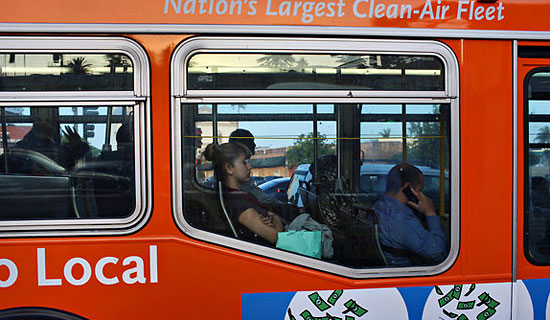


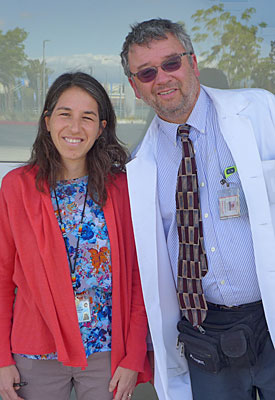
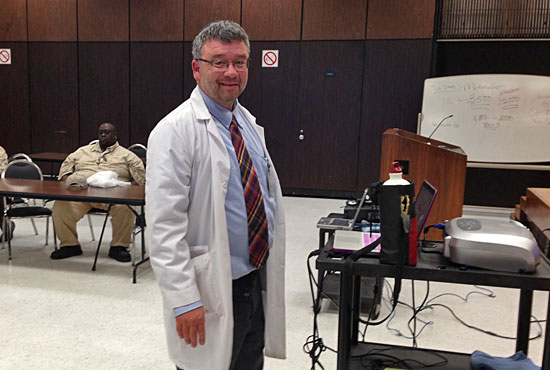

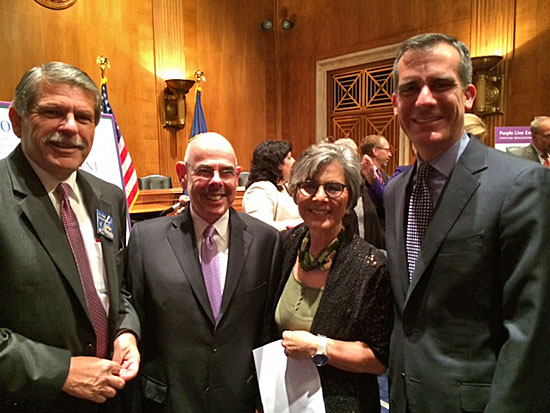





 Check for the latest closure information
Check for the latest closure information








